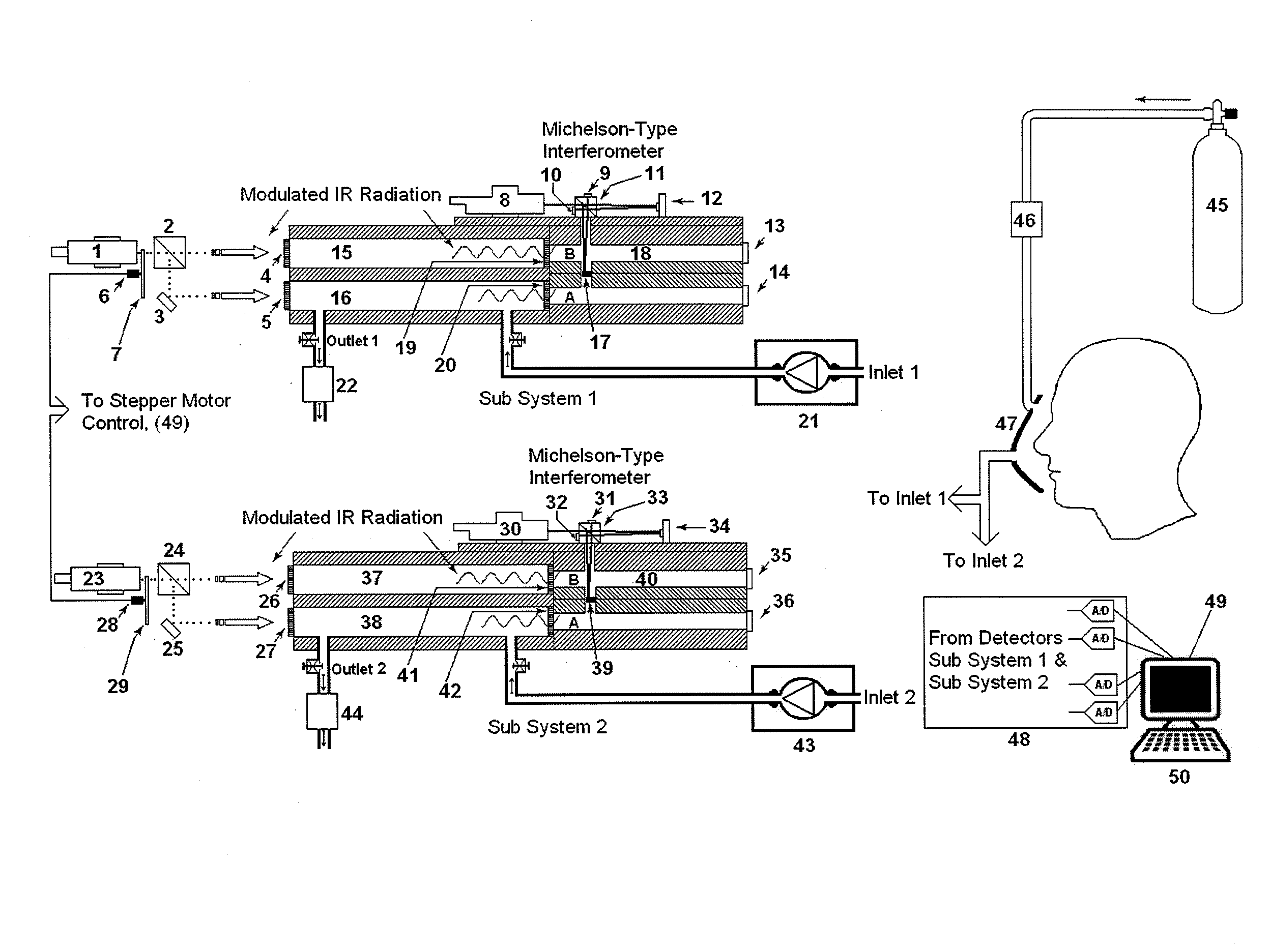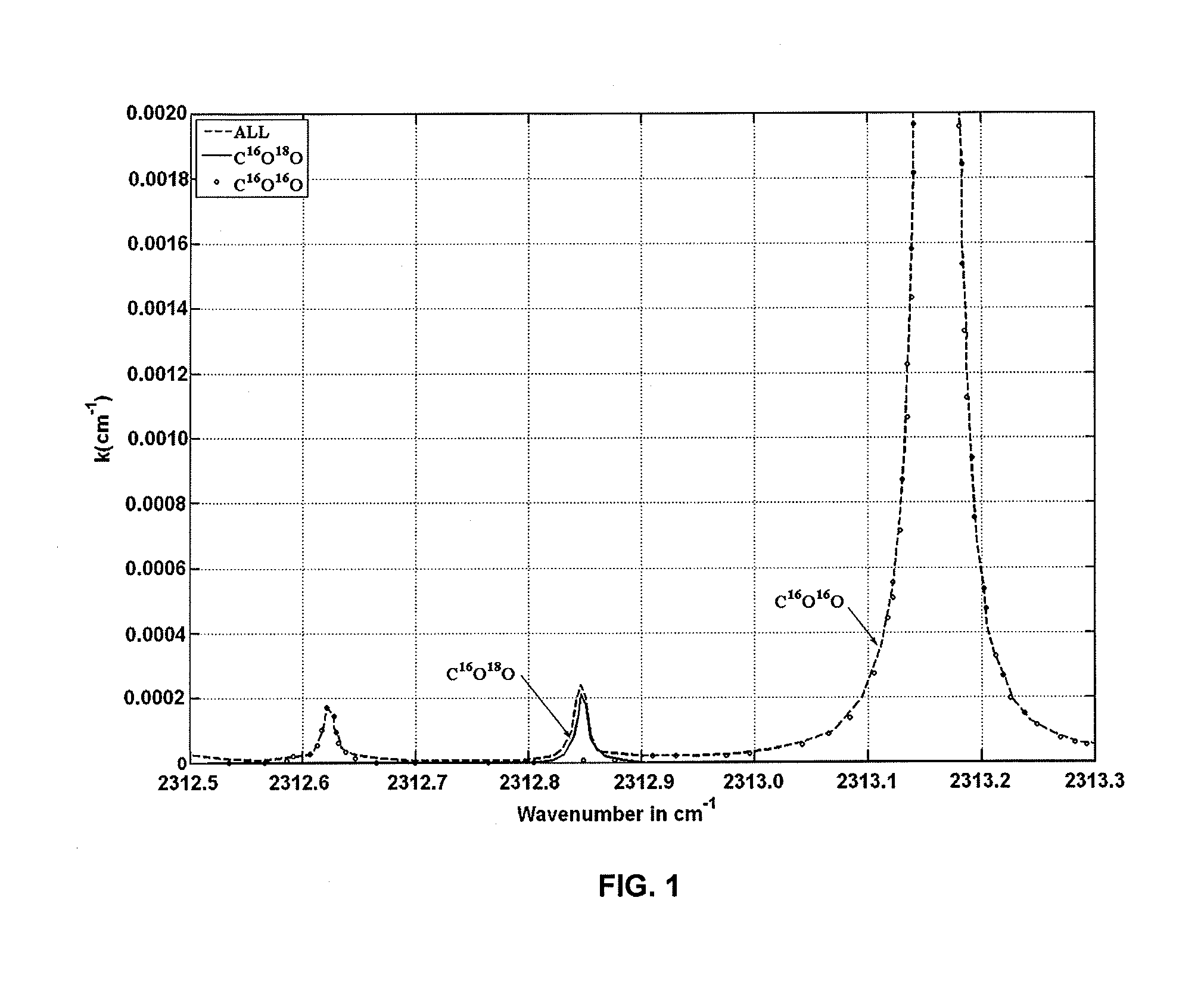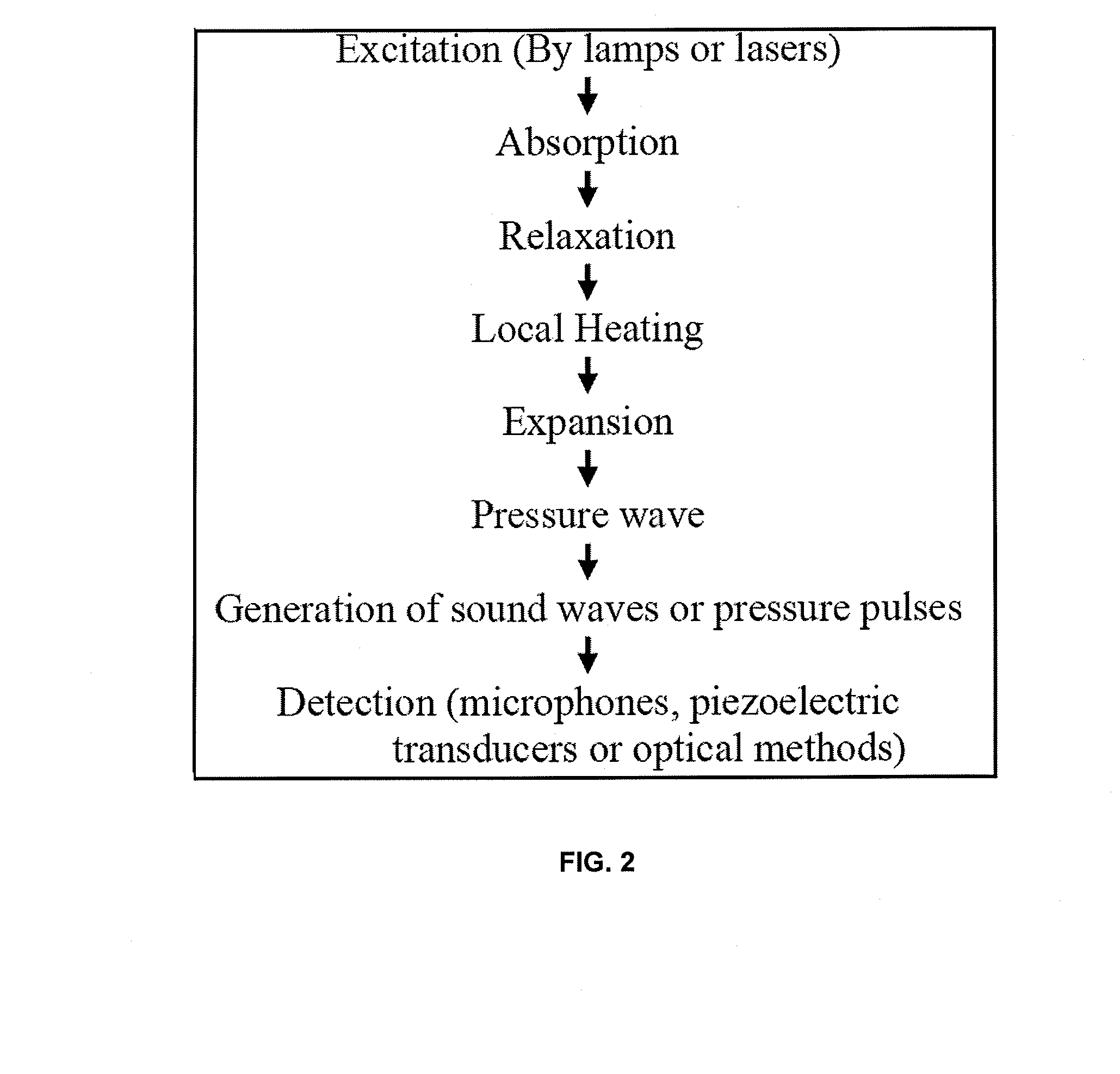Stable isotopic biomarker measurement for the detection of cancer and the determination of efficacy of treatment in diagnosed cancer patients
a cancer and isotopic technology, applied in the field of stable isotopic biomarker measurement for the detection of cancer and the determination of the efficacy of treatment in diagnosed cancer patients, can solve the problems of inability to use radioactive biomarkers on the same patient, injurious to patients, and inability to carry the risk of inadvertent spreading of tumor cells
- Summary
- Abstract
- Description
- Claims
- Application Information
AI Technical Summary
Benefits of technology
Problems solved by technology
Method used
Image
Examples
Embodiment Construction
Spectral Signatures of Exhaled Isotopologues of CO2
(1) Selected Spectral Interval
[0030]Spectral simulations have been performed to identify wavelength regions within which the instrument used to detect the presence and stage of cancer operates. The photoacoustic laser spectrometer of the present invention uses a spectral interval in the mid-infrared spectrum (i.e. 4.3 or 2309 cm−1) to probe the spectral lines of the targeted isotopologues of carbon dioxide, 12C18O16O and 12C16O16O in the exhalant. The latter isotopologue is also written as 12C16O2. Isotopologues of a molecule share the same molecular structure, but their individual atoms are different isotopes. Any sample of atmospheric air will contain a mixture of CO2 isotopologues in fixed proportions. For example, 98.4% of the CO2 molecules will be the primary isotopologue, 12C16O, while 12C18O16O will account for 0.39%. The remaining fraction is made up of more common and less common isotopologues (e.g. 13C16O2 and 12C16O17O r...
PUM
| Property | Measurement | Unit |
|---|---|---|
| pressure | aaaaa | aaaaa |
| pressure | aaaaa | aaaaa |
| wavenumbers | aaaaa | aaaaa |
Abstract
Description
Claims
Application Information
 Login to View More
Login to View More - R&D
- Intellectual Property
- Life Sciences
- Materials
- Tech Scout
- Unparalleled Data Quality
- Higher Quality Content
- 60% Fewer Hallucinations
Browse by: Latest US Patents, China's latest patents, Technical Efficacy Thesaurus, Application Domain, Technology Topic, Popular Technical Reports.
© 2025 PatSnap. All rights reserved.Legal|Privacy policy|Modern Slavery Act Transparency Statement|Sitemap|About US| Contact US: help@patsnap.com



